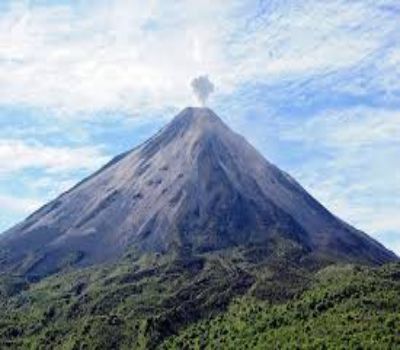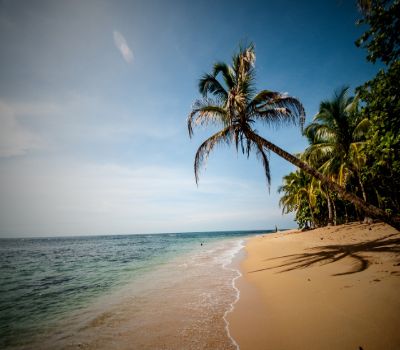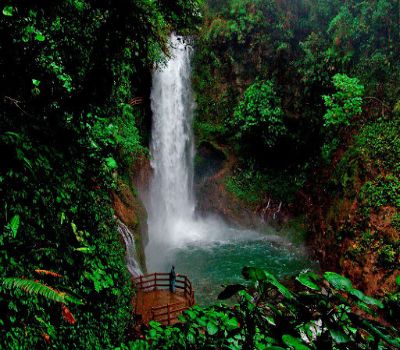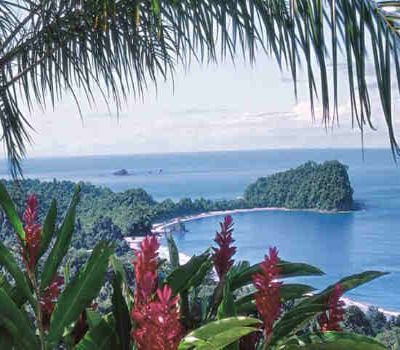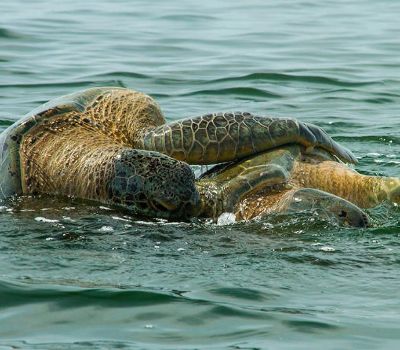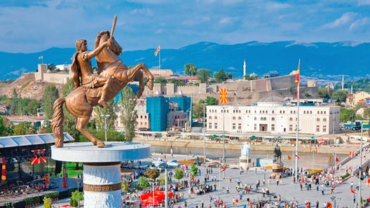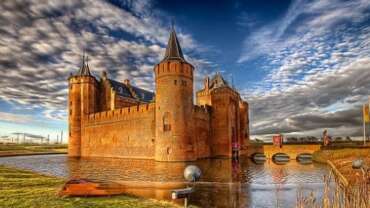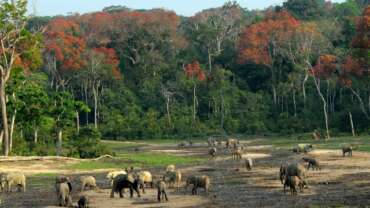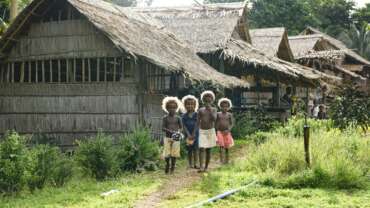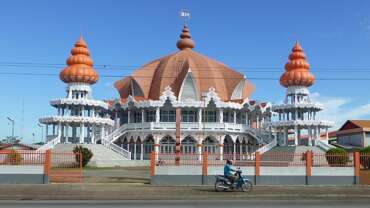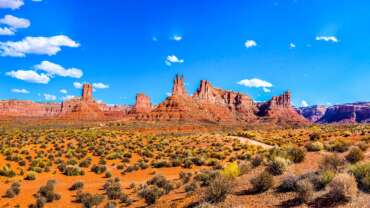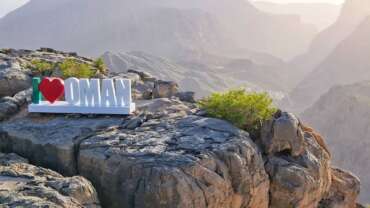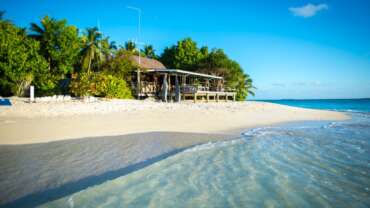Costa Rica - Pure Life
Costa Rica is a rugged, rainforested Central American country with coastlines on the Caribbean and Pacific. Though its capital, San Jose, is home to cultural institutions like the Pre-Columbian Gold Museum, Costa Rica is known for its beaches, volcanoes, and biodiversity. Roughly a quarter of its area is made up of protected jungle, teeming with wildlife including spider monkeys and quetzal birds.
Visitors enjoy lovely tropical beaches, grand adventures, the wonders of nature and scintillating culture – all the necessary components of an ideal vacation or holiday. No wonder, thousands have made Costa Rica their top travel choice!
Knowing about Costa Rica before you go!
Costa Rica is a country located in Central America that is ranked as one of the most visited international destinations. One of Costa Rica’s main sources of income is tourism. Costa Rica is a democratic and peaceful country and it has not had an army since the year 1948.
Although the country is small and it covers only 0.03 percent of the surface of the globe, it proudly shelters 5 percent of the existing biodiversity in the entire world. Twenty six percent of the country is composed of conservation and natural protected territory.
Furthermore, 2018 has become a magnet for meeting tourism with the opening of the National Congress and Convention Center (CNCC), which can welcome some 4,600 people to its meetings.
Located eight kilometers from the Juan Santamaría International Airport and just 10 kilometers from San José, the new space will bring together people from different backgrounds and cultures to exchange experiences and new businesses.
Costa Rica is also an attractive country for investment and offers great potential for the establishment of important multinational companies, thanks to the outstanding academic level of its population, as well as the high standard of modern services and social and political stability.
History of Costa Rica
Heritage and culture
Costa Rican culture is in many ways a reflection of its racial diversity. The predominant influence has long been European, which is reflected in everything from the official language — Spanish — to the architecture of the country’s churches and other historic buildings. The indigenous influence is less visible, but can be found in everything from the tortillas that are a staple of the Costa Rican diet, to the handmade ceramics sold at roadside stands.
An important aspect of Costa Rica’s cultural legacy is our love for peace and democracy. The Ticos proudly point out the nation is one of the few Latin American countries where a military dictatorship has not dominated politics.
The Ticos
Costa Ricans are proud to have more than a century of democratic tradition and more than 68 years without a military. With the money saved, the country is better able to focus on improving the quality of life of its citizens. This is one of the many reasons why Costa Ricans, also known as “Ticos,” are such a happy and welcoming people.
Famous for their hospitality, Ticos often go out of their way to help to visitors with directions or offer other assistance if needed. It is said that “Ticos” are the nation’s best asset. Once visitors experience their hospitality, visitors too are convinced.
Costa Rica Facts
Costa Rica is located in Central America, connecting North and South America. It borders Nicaragua to the north and Panama to the south. Because of its location, warm weather predominates, but many different microclimates are found throughout the country. According to the National Statistics and Census Institute, Costa Rica has a population of approximately 4,890,379, of which 2,467,829 are men and 2,422,551 are women.
The country is divided into seven provinces (San José, its capital, Alajuela, Cartago, Heredia, Puntarenas, Guanacaste and Limón), 81 cantons and 463 districts. It stretches across 51,100 square kilometers, which is the size of the country. It is a democratic, free and independent Republic. Most of the population professes the Catholic religion and enjoys freedom of religion. Its currency is the colón, and its official language is Spanish.
One of the most important and recognized characteristics of the country was the abolition of its army on Dec. 1, 1948 by former President José Figueres Ferrer. On that date, peace became one of the main principles of Costa Rica, differentiating it from other Central American countries that utilize the military as a method of defense.
Costa Rica has national patriotic symbols that represent part of the identity and traditions of Costa Ricans, particularly the National Anthem of Costa Rica, the Shield of the Republic of Costa Rica, the National Flag, the White-Tailed Deer, the Guaria Morada (a type of orchid that is the national flower), Marimba, Oxcarts, the Yigüirro (or clay-colored thrush, the national bird), the Guanacaste Tree, The Pre-Columbian Spheres of Diquís, the manatee, the Torch of Independence and the Crestones of Chirripó National Park.
Official language
Spanish. A large portion of the population speaks English as a second language.
Official religion
Roman Catholic; complete freedom of religion.
Official currency
Costa Rican Colón (plural colones) (¢)
Administrative divisions
Costa Rica is divided into seven provinces: San José, Alajuela, Heredia, Cartago, Puntarenas, Guanacaste, and Limón. Each province is divided into cantons, which are further subdivided into districts.
The country’s marine territory consists of the Isla del Coco, a World Natural Heritage site, located 548 km from Cabo Blanco, in the Pacific Ocean. It has a land area of 2,400 hectares and a marine territory of 73,100 hectares.
National symbols
The guaria morada: The guaria morada (Cattleya skinneri), a species of orchid, was declared the national flower of Costa Rica on July 15, 1939.
National flag: The national flag of Costa Rica. Under Decree no. 768 of October 25, 1949, National Flag Day (Día del Pabellón Nacional) is celebrated on November 12th of each year. The National Flag of the Republic is a tricolor with five horizontal bands: a red band in the center between two bands of white, each of which is followed by a blue band. The width of each band is one-sixth of the total width of the flag, with the red band in the center taking up two-sixths of the width. The coat of arms must be placed in the center of the red band on a white background.
Guanacaste tree: Enterolobium cyclocarpum. On August 31, 1959, it was declared as the national tree of Costa Rica.
Coat of arms of Costa Rica: The Coat of Arms shows three volcanoes and a wide valley between two oceans, with a merchant ship in each ocean. A rising sun is shown on the far left of the upper line, which marks the horizon. The crest is closed by two palm fronds that are united by a wide, white sash bearing golden letters that spell out “República de Costa Rica”.
Clay-colored thrush: The clay-colored thush (or yigüirro) was declared the national bird of Costa Rica in 1977 in the interest of the protection of this and other bird species in the country.
The traditional ox-cart: The ox-cart, or carreta, was declared a national symbol of labor in 1988. While they are no longer used to transport coffee, the colorful paint and the original designs made by artisans have made them famous around the world.
The national anthem: declared a national symbol on June 15, 1949 by Decree no. 551. The music was written in 1852 by the poet Manuel María Gutiérrez and the lyrics were written by José María Zeledón.
The white-tailed deer: in accordance with Legislative Decree No. 7497, it has been the national symbol of Costa Rican wildlife since June 8, 1995.
The Marimba: declared the national instrument par excellence by Executive Order No. 25114-C on September 3, 1996. It is considered to be the musical instrument that is associated with the most diverse popular festivals in Costa Rica.
The Torch of Independence: declared a national symbol on September 14, 2005 by Decree No. 32647-C. Since 1964, the torch tours Central America as a representation of the freedom and independence of Central American peoples.
The Crestones of Chirripó National Park: Declared a national symbol by Law 8943, published in the Official Journal La Gaceta No. 170 on September 5, 2011. The Costa Rican Tourism Board has been authorized to promote them as a tourist attraction in Chirripó National Park.
The manatee: was declared a symbol of Costa Rica’s marine fauna and of the hope and interest of Costa Rican children in protecting natural resources contained in the national territory by Law no. 9264 of August 7, 2014, published in the Official Journal La Gaceta no. 183 on September 24, 2014.
Pre-Columbian Spheres: In 2014, UNESCO chose the Diquís grouping of villages belonging to pre-Columbian chieftainships with stone spheres as a World Heritage Site. The Costa Rican Legislative Assembly declared them to be a national symbol of the country following the approval of Law no. 9265 of August 11, 2014, published in the Official Journal La Gaceta no. 201 on October 20, 2014. Archeologists believe that the stones were placed there by the indigenous peoples of the area between 300 B.C. and 300 A.D., though the sculptures have not yet been able to be scientifically dated.
The National Theater: On February 5 of this year, the then-President of the Republic, Luis Guillermo Solís, signed the law declaring the National Theater of Costa Rica as a National Symbol of Historical Archeological Heritage and Cultural Liberty. The law was approved in a second reading by 40 deputies.
Main distances
246 km (153 mi) by land from Puntarenas to Limón.
534 km (337 mi) by land from Peñas Blancas, at the Nicaraguan border, to Paso Canoas, at the border with Panama.
Highest point: Cerro Chirripó, at 3,819 meters (12,529 feet) above sea level.
Highest volcano: Volcán Irazú.
Largest volcanic crater: Volcán Poás crater, with a diameter of 1,320 m (43,307 ft) and a depth of 300 m (984 ft).
Electric coverage
97% of the national territory has electric power. Residential voltage is 110V.
Office hours
Public sector: Monday to Friday, 8:00 a.m. to 4:00 p.m. State banks: Monday to Friday, 8:00 a.m. to 3:00 p.m.
Private sector
Monday to Friday, 9:00 a.m. to 6:00 p.m. The majority of businesses operate on Saturdays and Sundays until midday.
People
Costa Rica’s richness also lies in the cultural diversity of our people. Currently, there are ethnic groups and colonies of immigrants including African descendants, Chinese, Hebrew, Lebanese, Italian, etc.; as well as the indigenous populations of the Bribri, Cabecar, Maleku, Teribe, Boruca, Ngöbe, Huetar, and Chorotega.
What makes Costa Rica unique?
Plant & Animals Everywhere
Costa Rica´s territory is so small that it encompasses only 0.03 percent of the planet´s surface but is still within the top 20 richest countries in biodiversity on Earth in terms of species density. That means that it is possible to find more species in 1,000 km2 in Costa Rica as in the same area in huge countries like Brazil or Colombia.
Let´s use Brazil as an example. Despite being 166.6 times bigger than Costa Rica, Brazil averages 6.5 plant species, 0.2 bird species and 0.05 mammal species per 1,000 km2. Meanwhile, Costa Rica averages 234.8 plant species, 16.9 bird species and 4.6 mammal species in that same 1,000 km2.
In fact, with only 51,100 km2 of total territory, Costa Rica has nearly half a million species, representing 4 percent of the planet´s biodiversity. We hope all the world is ready to discover it.
Biggest Oxcart & Yoke in the world
The oxcart is the national symbol of the traditional Costa Rican transport device and it is also considered a genuine expression of popular art. The same applies to the wooden apparatus which fits over the necks of two oxen and allows the beasts to be “yoke” harnessed together in order to pull a single cart. And so important are both that in the country it is possible to find the world´s largest oxcart and yoke, created by notable Costa Rican artisans and painters.
This oxcart, designed in 2006, is found in Sarchi, and is four meters in height and six in length and stands out not only for its monumental size, but also for the vivid colors with which is decorated. In the old days, oxcarts were the primary means of getting coffee beans, as well as other products, to markets and processing facilities.
The yoke, on the other hand, measures two meters in height and four meters in length, and was created in 2007 using hundreds of gallons of paint to decorate it.
Sarchi is a community recognized as the birthplace of Costa Rican arts and crafts and is a must-see destination for any visitor who wishes to appreciate traditional artistry.
Costa Rica’s Little Amazonas
There is a place in Costa Rica where the exuberance of natural wildlife and visitors become one and where the water is a giant mirror reflecting the lush foliage all around. Surrounded by a system of natural canals and lagoons running from southeast to northeast, Tortuguero National Park, located in the Northern Caribbean side, is without any doubt our little Amazonas. It is also one of the most important places in the world for the protection of the green turtle and home of other species such as the manatee, the American crocodile and the Gaspar fish, which is considered a living fossil.
Majestic birds such as the Great Blue Heron, the biggest heron in the country, and the Northern Jacana, famous in the animal world because the female protects the territory while the male nests the eggs, populate and thrive in this rich environment. The birds are so diverse that they account for approximately half of the species found in Costa Rica and surpass the number of species found in all Europe. Herbal swamps, marshlands and ‘flooded’ forests are part of this array of diverse habitats.
But Tortuguero is not only about nature. Being on the Caribbean side, it is one of the larger regions of Afro-Caribbean culture in the country. The majority of its population has Jamaican origins and keeps their food, dances and traditions. Their dishes are mostly spicy and many include coconut, giving Tortuguero a well-founded reputation to experience nature and culture.
Costa Rica’s marvels of Fire
As part of the Pacific Ring of Fire, Costa Rica´s volcanoes are among the most mesmerizing in the world. In fact, the present-day landmass known as Costa Rica is the result of complex volcanic activity that took place some 75 million years ago and still continues today.
Counting every location or crater where an eruption has occurred within its borders, Costa Rica volcanoes boast a stunning 112 sites throughout the country. Most Costa Rica volcanoes and their surrounding areas have been made into national parks.
One of the most popular is the Arenal Volcano, which last erupted in 1968. Until then, it was assumed that the volcano was just another peak of the mountain range. The mountain and surrounding area were declared a national park in 1994. Thermal hot springs are now the area’s main attraction, most of which boast nearby trails and numerous lookout points.
Currently, Arenal Volcano only releases gases in crater C and has fumarole activity in crater D. Seismic monitoring of the volcano indicates that volcanic activity remains low and external manifestations have been reduced to a minimum. In 2010, after 42 years of uninterrupted volcanic activity, the volcano entered a resting phase, ceasing explosive eruptions, pyroclastic flow and lava spilling. However, according to scientists, Arenal Volcano remains active.
An Indigenous Legacy that is still a mystery
Although the indigenous populations inhabiting Costa Rica before the Spanish arrival did not build architectural structures rivaling the Mayan pyramids of northern Central America, they did leave behind elaborately carved stone spheres whose meaning remains a mystery to this day.
There are 235 registered stone spheres in Costa Rica, all of them equal in perfection, measuring up to two meters and as small as 20 centimeters. They were created over a 1,000-year time period that began around the year 400 A.D. and lasted until the colonization of Costa Rica by the Spanish. The majority were found in the South Pacific and constituted such an important element to these societies that their production survived nearly a millennium.
The spheres were associated with pre-Columbian populations and regions where plazas, passing zones and open terrain were present. They constituted an art form that was meant to be seen, perhaps to differentiate the towns in which they were made from their neighbors. The spheres were often aligned with each other, forming lines, triangles or rectangles with an unknown meaning.
These indigenous groups also became recognized for their metal and ceramic work, and Costa Rica’s South Pacific was, in fact, the principal locale for pre-Columbian objects.
The Biggest Rainforest in Costa Rica
La Amistad International Park (PILA) is not only the largest natural park in Costa Rica with almost 200,000 hectares, but also the only bi-national park, created by the governments of Costa Rica and Panama in 1982. It could explain the name La Amistad, which means friendship in Spanish. The total extension of this amazing portion of protected land in both countries is nearly 400,000 hectares, which covers a great variety of humid, rain and cloud forests in the Pacific and Atlantic sides, as well as indigenous towns.
The Talamanca region, a big portion of the park, was a refuge in colonial times for indigenous people who resisted the Spanish colonization. The isolation of the region, thanks to the difficult geographical conditions, allowed its inhabitants to safeguard most of their traditional ways of life and attire.
The enormous cultural richness and extraordinary natural habitats, result of different altitudes, soil and microclimates, was the reason why the park was also designed a Biosphere Reserve and World Heritage Site.
Species in great danger of extinction such as the jaguar, the largest feline in the Americas and third largest world-wide, live in the park as well as a great variety of wildlife, which includes 400 species of birds, 263 species of amphibians and reptiles and 213 of mammals. Many other species are found only in this giant rainforest.
A Paradise for Divers
With a marine surface that is ten times bigger than the terrestrial and an immense biodiversity, Costa Rica is the perfect place for diving fanatics. The majority of these places belong to wildlife protected areas around the country, such as the famous Cocos Island National Park, which is also a World Heritage site. Costa Rica´s Pacific coast is considered by Rodale´s Scuba Magazine as one of the top five destinations in the world for advanced scuba diving.
Located 532 kilometers off the Pacific coast, Cocos Island was historically a refuge for pirates, merchants, whalers and even colonizers. Today, its natural treasures include hammerhead sharks, humpback whales, bottle nose dolphins, hawksbill turtles and a variety of coral species. The famous oceanographer Jacques Cousteau deemed Cocos Island “the most beautiful island in the world.”
But the Caribbean coast has its own wonders too. For example, the Gandoca-Manzanillo Wildlife Refuge is unique because of the amazing species found there. In only five square kilometers of coral reef, scientists have discovered 600 species of mollusks, 10 percent of which are unique in the world. In general, the Costa Rican oceans shelter at least 6,777 species, representing 3.5 percent of known species in the planet and also making the country a must-visit destination for diving enthusiasts.
An Old Survival Ritual
Marine turtles have inhabited the Earth for over 100 million years, surviving extreme climatic changes. Costa Rica is home to some of the most important turtle nesting beaches in the world, where it is still possible to witness this old survival ritual.
On the Pacific as well as the Atlantic coast, hundreds of female sea turtles representing five different species of the world´s seven species of these reptiles, arrive on Costa Rican beaches to carry out their tireless mission to guarantee their survival. For example, Ostional Beach, on the Northern Pacific coast, is considered the main nesting site for the olive ridley turtle, which is famous for its large mass arrivals.
The giant leatherback turtle cannot go unnoticed, even though it is in great danger of extinction due to man-made causes. It is not only the largest sea turtle on the planet, measuring up to 1.8 m and weighing up to 400 kg, but also the furthest traveling reptile. Their journey takes them from their feeding sites back to the beach where they hatched in order to lay their eggs. In some cases, these giant turtles travel between continents. Other sea turtles that can be seen in the country are the green, hawksbill and loggerhead.
Guayabo: A glance of Costa Rica’s indigenous past
In 2009, the most important archeological site in Costa Rica, the Guayabo National Monument, located in the outskirts of Turrialba Volcano, was declared a World Engineering Heritage Site by the American Association of Civil Engineers (ASCE). Guayabo is the third archaeological site in Latin America to receive this distinction after Machu Picchu and Tipon in Peru.
One of the reasons is its over 700-year old aqueduct, still functional today, as is its “calzada”, a stone walkway used as a transit route and part of the drainage system. The calzada leads towards a ceremonial center, where it is possible to observe several mounds which at one time served as supports for the famous conical roofed straw and reed structures of South American influence. Stone was commonly used in Guayabo to build a system of sidewalks and walls that helped prevent erosion and landslides. There are also stone tombs decorated with pebbles, flagstones and engravings or petroglyphs.
Guayabo was constructed between 300 B.C. and 1400 A.D. and was populated by indigenous groups of the Intermediate Cultural Area, which extended from Alajuela, in Costa Rica, all the way to Colombia, Venezuela and part of Ecuador. Despite the fact that Guayabo was no longer populated when the Spaniards arrived and the causes of its depopulation are still a mystery, the site was for centuries undoubtedly a highly developed cultural and political-religious center, whose importance was heightened precisely because of its rich resources and the presence of the Turrialba Volcano.
A Perfect Whale’s tail
The Uvita tombolo or sandy bridge that connects the mainland with a rocky islet, near Dominical Beach, in the Southern Pacific of Costa Rica, looks like a perfect whale´s tail in low tide. But more interesting is the fact that the place and surroundings are one of the best spots to watch humpback whales coming from North and South America.
These warm waters are just what these whales are looking for when the winter time arrives. Northern humpbacks are normally seen from December to April and southern humpbacks from July to October.
The spectacle is amazing, taking into account that they can measure up to 16 meters in length and weigh up to 40 tons. The name is due to a small hump in front of their dorsal fin that can be very noticeable when they double over to dive into the water.
The Canopy Tour – Originally from Costa Rica
Born in Costa Rica in the 90s, the canopy tour is the closest anyone will come to feeling like a monkey travelling through the tree tops. It is also one of the best ways to explore the richness of the canopy, where the biggest amount of the forest´s biodiversity is found and to raise awareness about the rainforest’s fragile ecosystem.
It consists of a series of suspended cables attached from tree to tree on which one glides along using a pulley that is secured to alpinism equipment (the harness). Cables vary in length (they can measure even 700 meters long!) and end in small wooden platforms built in the tops of trees, which are located up to 100 feet above the jungle floor. The impact to the forest is minimal. This explains why biologists were the first ones who, more than three decades ago, started using this technology for research.
The canopy tour has been adapted to a great variety of environments and landscapes within the country, including mountains, canyons, rivers, waterfalls and cloud, dry and tropical forests. The tour has also been exported to other Latin.
Costa Rica: A favourite country for surfing
It seems like every surfer who visits the country agrees that Costa Rica is one of the best places in the world to surf; it’s no accident Costa Rica is the third most popular destination for this sport after Hawaii and Indonesia. The reasons are simple: beaches with excellent year-round waves, pleasant weather, warm water, friendly people and reasonable prices.
In 2009, Billabong World Surfing Games took place in Costa Rica, with 35 countries participating. To host the games, Costa Rica beat out renowned surf destinations like Brazil and South Africa. Consider: Costa Rica has two great oceans within a 6-hour drive of each other. This makes it possible to surf the Pacific in the morning and the Atlantic in the afternoon.
Natural Touch
Costa Rica offers highly acclaimed, holistic spas famed for organic treatments and products. There is no guarantee that the fountain of youth is here, but then again, one never knows.
Conquering and Enjoying the force of water
Every adventurer and nature lover should take the opportunity to experience white water rafting in Costa Rica. The reason is simple: world-class rapids and a stunning tropical landscape.
Rafters from ages 12 and up can choose between class II rapids for beginners up to class IV for the more experienced thrill-seekers.
The gentler Sarapiqui or Corobici rivers are ideal for newcomers. Other rivers, like the Reventazon, have sections for both beginners and amazing white water for the more experienced.
The Pacuare River offers a long and spectacular experience, including a two-day trip where rafters camp, swim, and explore waterfalls while toucans, sloths and howler monkeys give a warm welcome.
A bird that cannot go unnoticed
Its plumage is mostly scarlet but its tail feathers are light blue, making the Scarlet Macaw one of the most beautiful birds of the American tropics. In fact, at almost one meter in length, more than half constituted by its pointed striking tail, this bird cannot go unnoticed, especially because they are often seen in pairs. A number of couples may even congregate with others to form a flock of several hundred individuals, a spectacle that is impossible to forget when they fly above the forest canopy.
This is possible because the Scarlet Macaw lives in lowland rainforests, open woodlands, river edges and savannas of Central and South America. Its range extends from Mexico to the Amazon basin.
One interesting thing about Macaws is that they are not only monogamous but also form only one couple in their entire life, meaning that if any of the two dies, the other remains alone, which could be a very long time, taking into account that these birds can live as long as 50 years or more.
Another curious thing is the use of beaks as an aid in both eating and as a “third foot” when climbing. The beak is strong to crush seeds and nuts, while the thick fleshy tongue is used to move the food around. Breeding takes place during the first half of the year and the nest is usually in a hole at the top of a tall dead tree previously made and used by a woodpecker. Despite the fact that the young are born featherless, at six months it is hard to distinguish the young from the parents.
A Volcano almost in the capital
Historically, the most active of all Costa Rica volcanoes, Irazu, is also the biggest neighbor of Costa Rica´s capital city. Located, in fact, 30 kilometers from San Jose, this colossal giant reaches 3,432 meters above sea level and thanks to its height, on a clear day, both the Pacific and the Atlantic oceans are visible from its peak.
Irazu volcano has been a national park since 1955. Its name comes from the indigenous word “Istaru,” meaning “mountain of tremors and fire.” Despite of being the volcano with highest altitude in the country, its summit can be reached easily by car, making this five crater volcano very accessible to all visitors.
Situated in the main crater of the volcano, there is a stunning, sulfurous, turquoise-green lagoon measuring more than a kilometer in diameter and some 300 meters in depth. It has an average temperature of 35 degrees Celsius and reaches 70 degrees in areas closest to its fumaroles. The summit is crowned by an interesting Andean-like vegetation consisting of small shrubbery and its ample, semi-desert like landscape that in some way resembles the moon’s surface.
The journey to Irazu also includes a peaceful trip across fertile agriculture lands and beautiful landscapes of the region´s unique small-sized vegetation. The first recorded eruption of this volcano occurred in 1732 and its last active period ended in 1963. It seems to be asleep now, but who knows for how long…
The secret to longevity is hidden in Costa Rica
The elderly of the Nicoya Peninsula in Southern Guanacaste, many of whom are in their 90s, are among the most long-lived people in the world. This phenomenon was measured for the first time in a 2004 demographic study, which found that those in their 90s in this region have a 10 percent lower mortality rate than the rest of the country.
With an area of more than 2,500 square miles and a population of just 132,000, over 5,000 of its inhabitants are over the age of 75. The study also found that Costa Rican males have a longer life expectancy on average than their counterparts the world over. This means that a Costa Rican man who reaches his 80th birthday will, on average, live 8.2 years longer than if he resided in Japan, the U.S. or Iceland. If he reaches 90, he will, on average, outlive his counterparts in those countries by 4.4 years.
The phenomenon of longevity drew the attention of writer Dan Buettner, founder of Bluezones.com. His mission is to identify what he terms “blue zones,” or areas of greater longevity around the globe; not only areas where people live longer, but also where they seem to enjoy better health than those who live in surrounding areas.
He and his team, with the support of the National Geographic Society and Allianz Life, corroborated in 2007 the accuracy of the data in Costa Rica, but also identified a blue zone in the Nicoya Peninsula where the residents likewise live longer on average than those in the rest of the country. Other blue zones internationally include Sardinia (Italy), Okinawa (Japan), and the valley of Loma Linda, California (USA).
According to scientists, genetic factors play only a 25 percent role in determining how long we live. The rest is determined by our lifestyle and daily habits. One thing that means is that even though you don’t live in Nicoya, you can still apply some of the research findings to increase your longevity. Besides specific factors in the region such as water rich in calcium that strengthens bones and a diet rich in fruits and hominy (nixtamal) with their antioxidants, niacin, and amino acids, there are other secrets one can adopt which have to do with how these people approach life.
Living in extended families, having faith and engaging in physical labor that keeps them in shape are three more pieces of the longevity puzzle of the Nicoyans, factors that also help them to live a life that has direction, meaning and connection to others. Such a lifestyle brings about happiness, which in turn raises endorphin levels and strengthens the immune system.
Apparently the people of Nicoya are not only concerned with their own lives, but see themselves as connected to others and stay active and seek to learn new things throughout their life span. And so they get to add a new candle each year to the cake.
The most amazing journey across the Americas
It is thought that they have biological clocks and are good geographers because many recognize rivers, mountains and cities; some even say that they are great astronomers because they guide themselves by means of the sun, the stars and even the Earth’s magnetic field; others recognize chemical odors and marine currents.
What is certain is that every year, millions of migratory species, whether by water, land or air, travel enormous distances over the American continent, some of them arrive in Costa Rica, in search of better climatic conditions, more abundant food or a suitable site for reproduction, which generally coincides with the warmer season. These odysseys are not exempt from great challenges; some species travel up to 20,000 miles round-trip.
This happens with species of whales, bats, birds, fish, sea turtles and even insects like the monarch butterfly. Most flee the North American winter to seek food in the southern part of the continent, and then return to their feeding grounds in the north when their favorite foods sprout anew in the spring.
Very small species like ruby-throated hummingbirds (Archilochus colubris), which measure only 10 cm, fly non-stop for 26 hours from Canada and the United States to Central America at a velocity of 28 mph for a voyage of 652 miles that even includes crossing the Gulf of Mexico. And if the blackpoll warbler (Dendroica striata), only 13 cm long, were to burn gasoline instead of body fat, it would get 715,852 miles per gallon.
But the most extensive individual migration known for a mammal was that of a humpback whale (Megaptera novaeangliae), initially spotted off the Antarctic Peninsula and then seen off the Santa Elena Peninsula of Costa Rica, for a total trip of 7,130 miles.
In the Americas, from the Arctic to Antarctica, migratory species are vital ecological and economic resources, shared by the nations and inhabitants of the Western Hemisphere. They are sources of food, means of livelihood and recreation, and they have important biological, cultural and economic values for society.
Honeymoon & Weddings

Costa Rica is waiting for you to live this experience.
Every couple has dreams of walking hand-in-hand, along a perfect paradise of a beach, feeling the soft sand between their toes as the nearby ocean sets the tone for romance. Costa rica’s multicolored beaches are the perfect honeymoon under the sun and the moon!
There are so many memories to be made: the underwater world and diving experience, sailing, kayaking, fishing, golfing, visiting natural reserves filled with lush greenery. The passion and romance are hidden in the beautiful sunsets just awaiting discovery!
Escape from the rest of the world
On the beach, alone, in love – There are many beach hotels, both large and amazing and small and intimate in north and south guanacaste, puntarenas and nearby islands, central and south pacific, and south caribbean regions. Several local companies operate flight services to and from liberia, central pacific, and golfito. Access is also not difficult by road. Explore the underwater world in an amazing diving experience, go sailing around the coast, play with the waves in a kayak, go fishing, play some golf, visit the nearby natural reserves where you will be amazed by the lush greenery. Feel the passion and romance hidden in the beautiful sunsets, while you walk along the beach hand in hand, listening to the soft, rippling sounds of the waves. These are some of the options that, together with costa rica’s natural beauty will always be part of the memories you will have of a fantastic honeymoon.
A unique love nest – Costa rica has two international airports: the juan santamaria airport in san jose and the daniel oduber airport in liberia, guanacaste. So, getting here is not a problem. Hotels offer honeymoon packages with accommodations to suit every taste and budget. The boutique hotels offer more privacy, or one of the many all-inclusive beach hotels offer it all. For nature-lovers, many hotels offer close contact with nature and romantic mountain hiking.
Romance in the mountains – Imagine taking in the magical qualities of the tropical forests while listening to the rain patter against the roof in a cozy cabin. Or, for the more adventurous, horseback riding, rafting and zip lining are also available. The mountains, volcanoes, cascades, jungles, tropical rain forests, and lagoons of costa rica, all are easily reachable by air or road and offer myriad happy moments and delights. Hotels can be found in monteverde, northern plains, central valley, north caribbean, south and central pacific.
Total happiness right from the start – Just like the perfect wedding, a honeymoon should be as close to perfect as possible. That is why costa rica, recognized as one of the best wedding locations in 2016 by destination weddings & honeymoons, is the perfect place to get marriage off to a great start.




